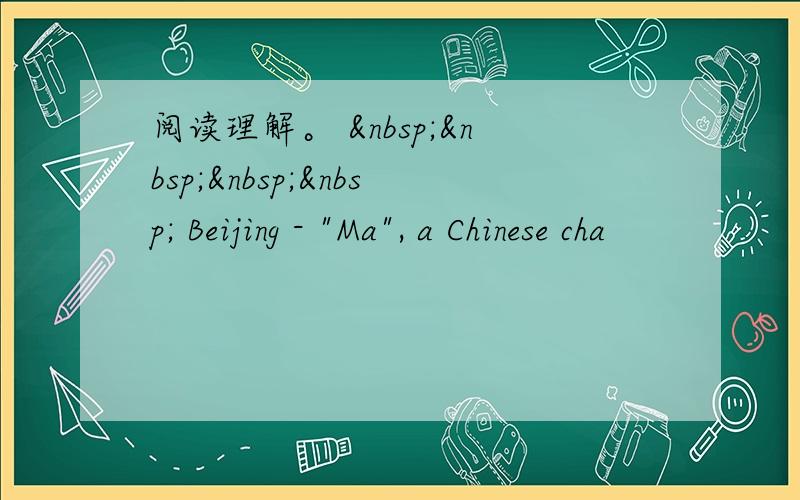阅读理解。 Beijing - "Ma", a Chinese cha
来源:学生作业帮 编辑:百度作业网作业帮 分类:英语作业 时间:2024/05/23 16:12:05
| 阅读理解。 |
| Beijing - "Ma", a Chinese character for horse, is the 13th most common family name in China, shared by nearly 17 million  people. That can cause no end of confusion when Mas get together, especially if those Mas also share the same given name, as many Chinese do. people. That can cause no end of confusion when Mas get together, especially if those Mas also share the same given name, as many Chinese do.Ma Cheng’s book-loving grandfather came up with an elegant solution to this common problem. Twenty-six years ago, when his granddaughter was born, he consulted his library of Chinese dictionaries and lighted upon a character pronounced “cheng”. Cheng looks just like the character for horse, except that it is condensed (压缩) and written three times in a row. The character is so rare that once people see it, Miss Ma said, they tend to remember both her and her name. That is one reason she likes it so much. Chinese parents’ desire to give their children a spark of individuality (个性) is colliding (冲突) with the Chinese government’s desire for order. Seeking to modernize its vast database on China’s 1.3 billion citizens, the government’s Public Security Bureau has been replacing the handwritten identity card that every Chinese must carry with a computer-readable one, complete with color photos and microchips. The new cards are harder to forge (伪造) and can be scanned at places like airports where security is a priority. The bureau’s computers, however, are programmed to read  only 32,252 of the roughly 55,000 only 32,252 of the roughly 55,000 Chinese characters according to a 2006 government report. The result is that Miss Ma and at least some of the 60 million other Chinese with obscure characters in their names cannot get new cards - unless they change their names to something more common. Moreover, the situation is about to get worse or, in the government’s view, better. Since at least 2003, China has been working on a standardized list of characters for people to use in everyday life, including when naming children. The list will aim to control the use of obscure names. 1. Which of the following can describe the function of Paragraph 1? A. Lead-in. B. Main idea. C. Summary. D. Argument. 2. This passage is somewhat like a(n) ________. A. advertisement B. official document C. special report D. study plan 3. What can we know about Ma Cheng according to the passage? A. She has got her new ID card. B. She was named after her grandfather. C. She is 26 years old now. D. She wants to change her name. 4. The underlined word “obscure” in the fifth paragraph is closest in meaning to "________". A. common B. poor C. puzzling D. meaningless 5. What can be inferred from the last two paragraphs? A. China’s Public Security Bureau’s computers can read 55,000 Chinese characters. B. The usage of Chinese characters would be more and more standard. C. Standardized list of Chinese characters has been given out to the public. D. Those who have stra  nge names will have their new ID cards sooner or later. nge names will have their new ID cards sooner or later. |

1-5 ACCCB